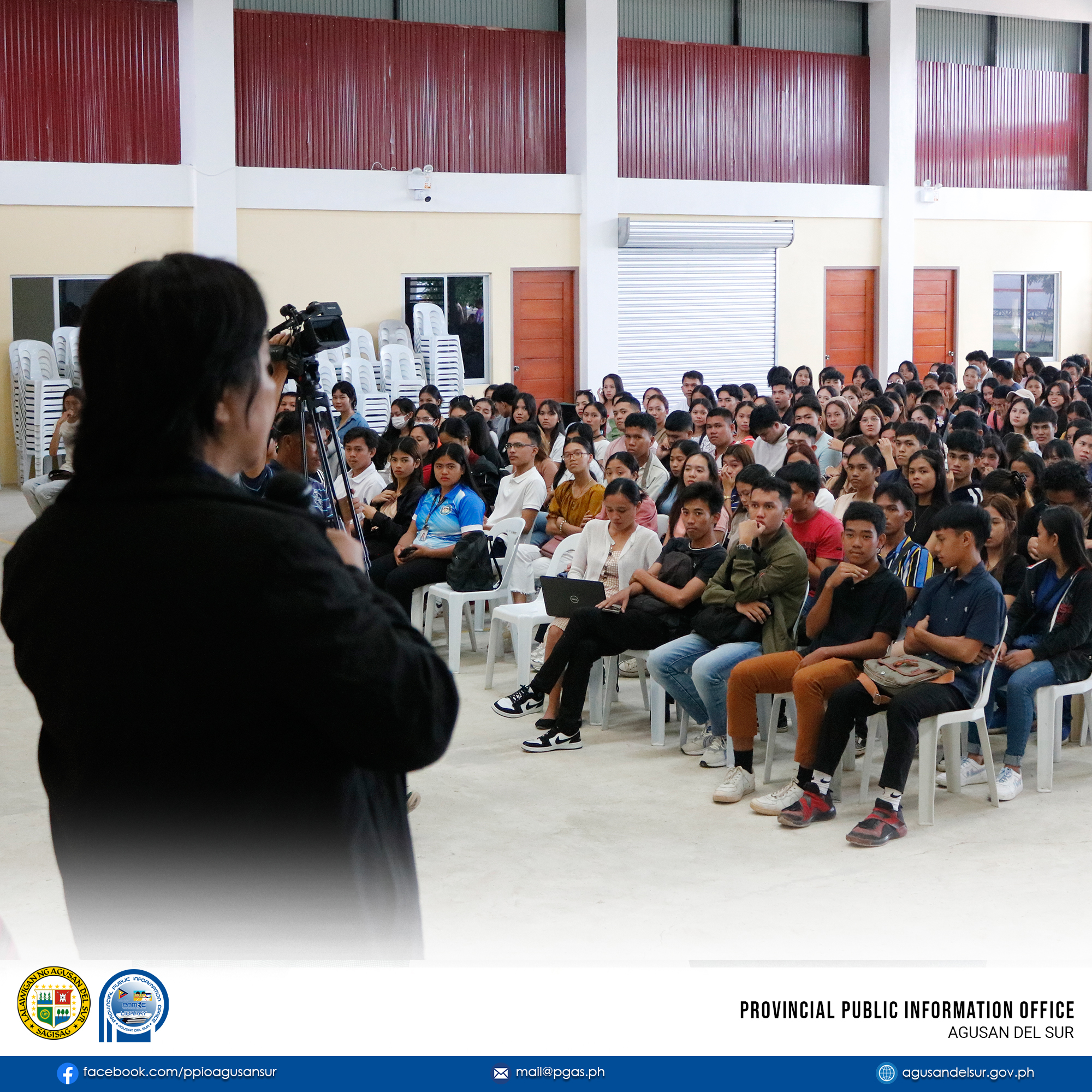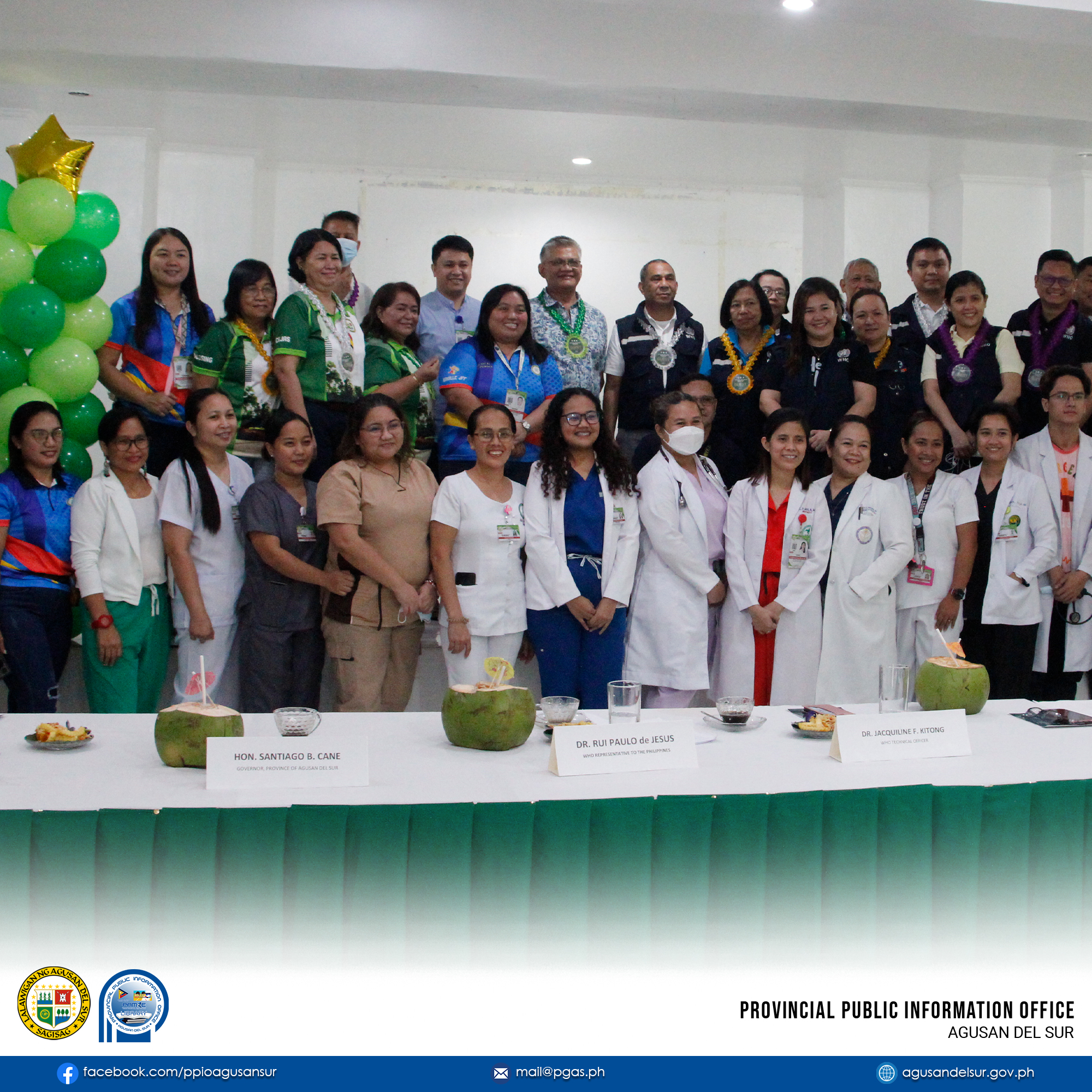Health literacy brings hope to Esperanza’s fight vs Covid-19

ESPERANZA, Agusan del Sur-– In this town named after the Spanish word for “hope,” improving health literacy among its 60,000 population, according to Mayor Deo Manpatilan Jr., has brought hope for a higher vaccination rate against COVID-19.
At least four interior villages had an initial vaccination rate of less than 10% because, among other reasons, religious leaders from various sects advised their followers not to be vaccinated against COVID-19.
Local officials and healthcare providers in the area concur that the stigma surrounding anti-COVID vaccinations has been a major obstacle, especially in remote areas.
Manpatilan, who assumed the post of mayor on June 30 last year, acknowledged that these four villages – Duangan, Kinamaybay, Guibonon and Maliwanag — were the hardest to deal with but he noted that a number of residents were eventually convinced to accept vaccination following a thorough information and education campaign.
Records from the Provincial Health Office (PHO) show that the vaccination rates in Kinamaybay and Duangan are rising, but they are still below the 70 percent herd immunity target by the end of 2022.
Vaccination rate in these geographically isolated and disadvantaged areas (GIDA) as of November 2022 was only 2% in Maliwanag; 7% in Kinamabay, and 8% in Guibonon. In Duangan, which is not consider a GIDA, only 5% have been vaccinated.
According to the May 2020 census of the Philippine Statistics Authority, Duangan has a population of 1,658; Guibonon has 329; Kinamaybay has 855; and Maliwanag, 262.
Dr. Maria Theresa Cacal-Labiao, municipal health officer of Esperanza, said vaccination rates had improved in the two communities as of December 2022, with 15% vaccinated among Maliwanag residents and 60% among Duangan residents.
Duangan is located some 10 kilometers from the municipal road, passable by any sort of vehicle, but according to Labiao, locals were hesitant to get the jab when an influential person warned them that death is among the consequences of the vaccine.

Enticement campaigns
To dispel myths about COVID-19 vaccination, the Rural Health Unit conducted weekly house-to-house visits. Labiao believes these visits helped increase the vaccination rate.
Labiao’s office also did catchment area methods by bringing together health workers from adjacent villages to jointly campaign and vaccinate residents every Thursday and Friday.
In areas where vaccination rates are low, the local government unit gave incentives of five kilos of rice while the Municipal Health Office distributed hygiene and medical kits.
To encourage more people in Kinamaybay to get vaccinated, Manpatilan promised half a sack of rice for each household.
He claimed that in Kinamaybay, residents refused vaccination because of misinformation disseminated by church pastors.
“Not giving up”
The mayor has not given up hope that majority of his constituents will go for vaccination.
“We are not giving up in expecting people would recognize the need to be vaccinated since the COVID threat is still around us,” the mayor said in an interview at the sidelines of the Joint Meeting of the Expanded Local Health Board on February 6.
Majority of Kinamaybay’s population are devout Baptists from the Higaonon region.
The distance between Kinamaybay and Poblacion Esperanza is 70 kilometers. To get there, one has to take the Esperanza to Butuan City bus and upon reaching Las Nieves town in Agusan del Norte, take the motorcycle and turn left at the crossing en route to Kinamaybay.
“Vaccination Exemption Cards”
Dindi Remillete, the PHO’s national immunization program’s point person, said another challenge they faced was the anti-vaccination campaign of leaders of a Christian ministry in the rural town of La Paz.
Remillete said that in Barangay Bataan, a pastor was reported to have sold “vaccination exemption cards” for 150 pesos each, the cards bearing the photograph of the card holder, stating that “I fully understand the risks of non-vaccination, hence I prefer to practice safety guidelines to keep myself and the community safe.”
The card also cites Section 12 of Republic Act 11525, also known as the COVID Immunization Act of 2021.
Section 12, however, provides that the Department of Health (DOH) “shall issue a vaccine card to all persons vaccinated” and that it could delegate the processing and issuance of these cards to local government units and private entities, subject to guidelines promulgated by the DOH. No fees shall be collected to obtain a vaccine card.
Remillete said the pastor sold over 200 cards to his congregation, many of whom are not even churchgoers. Thus, out of a total population of 2,051 in Barangay Bataan, only four residents in the village received the second dose of the anti-COVID vaccine.
But La Paz Mayor Michael Lim immediately acted on the reports and told the pastor to stop selling these cards and stop spreading wrong information, prompting more residents to go for the second dose.
Against the teachings
PHO data showed that as of November 2022, the immunization rate in Bataan was only 779 of the village’s 2,051 population.
Aside from religious leaders, Alejandro Maglasang, leader of the anti-communist group Red Cobra, whose members belong to the the Rizalian cult, also discouraged vaccination in the village of Mahagkot, which is only three kilometers from the poblacion.
Maglasang, however, refused to be vaccinated claiming it is against the teachings of his sect.
Red Cobra is an anti-communist group organized in the 1980s by then Col. Alexander Noble while he was commander of the Army’s 23rd Infantry Battalion.
Red Cobra is comparable to Davao City’s anti-communist group Alsa Masa.
Door-to-door campaign
Despite the many challenges in urging residents to go for vaccination, the staff of the Municipal Health Office (MHO) and PHO and even officials from the Department of Health (DOH) Caraga have continued with their door-to-door campaign to educate and encourage citizens to be vaccinated.
Vaccination rate in Mahagkot as of yearend 2022 was around 55%, or 15% below the 70% herd immunity goal.
Jocelyn Paran, a Rizalian cult member and the barangay secretary of Mahagkot, denied that only a few of their members are vaccinated.
She said many residents from Purok Rizal who work outside as construction workers, domestic helpers and other low-wage service workers have been vaccinated at their places of employment but this information has not been passed on to the MHO.
In the remote community of Maliwanag, vaccination rate has increased from 2% to 15%.
Maliwanag is located some 40 kilometers from the town center and reachable only by motorcycle until the 34th kilometer, with the remaining six kilometers accessible by hiking.
Joel Salas, the chief of the village, attributed the low incidence of immunization to the belief that the villagers are too isolated for COVID-19 to reach them and the fact that they rarely have visitors from outside their village.
Banwaons make up Maliwanag’s small population of 262. For the same reasons, Guibonon, a remote village, has only an eight percent immunization rate despite widespread efforts to reach its residents.
Labiao believes that several residents may have traveled three hours to Gingoog City in Misamis Oriental to get vaccinated. Guibonon to Esperanza’s poblacion is 50 kilometers away but residents of Guibonon prefer going to Gingoog to purchase goods because transport cost is cheaper than hiring a motorcycle to the poblacion of Esperanza.
Herd immunity
The western communities of Esperanza, where members of the Higaonon tribe are the majority, have met the herd immunity threshold. This is because they followed their tribal leaders who set the example by being among the first to be vaccinated.
The local government has spent at least a million pesos to provide transportation for Higaonon villagers to and from the vaccination centers, as well as food after the vaccination and five kilos of rice for some.
There is a concrete road that connects Esperanza with Impasug-ong in Bukidnon. The road connects most of the western villages of Esperanza.
Remilette reported that the Higaonons were given a medical package containing drugs used to treat mild to moderate cases of COVID in quarantine centers across the province.
The kits are labelled “Team Eddiebong,” referring to the top four provincial officials: Governor Santiago Cane, Jr., Vice Governor Samuel Tortor, and Representatives Adolph Edward “Eddiebong” Plaza and Alfel Bascug of the 1st and 2nd districts, respectively.
The PHO also introduced a cutting-edge telemedicine system, where medical professionals from the D.O. Plaza Memorial Hospital in Patin-ay in the capital municipality of Prosperidad, Agusan del Sur can speak with COVID patients online while they are quarantined at home and provide them with medical advice to help them get well.
Labiao, however noted that the Rural Health Unit and Esperanza Municipal Community Hospital do not have a strong internet connection to implement this system.
Agusan del Sur, whose population as of May 2020, is 739,367, has 13 towns and one city. According to the DOH Caraga Regional Vaccination Operation Center, as of December 21, 2022, a total of 452,563 residents have been fully vaccinated. But only 13,183 residents have received booster shots.
Esperanza has a vaccination rate of 82.25 %. Among the province’s 14 local government units, it ranks 12th.
HFEP
The year 2023 is expected to be even more challenging for local governments following the implementation of the Health Facilities Enhancement Program (HFEP), where the Department of Health has been delegating some of its services to LGUs.
Under this program, LGUs will be responsible for providing the necessary facilities, equipment, and transportation to run Rural Health Units and community hospitals,
On top of this challenge is the fact that the National Tax Allotment (NTA; previously referred to as internal revenue allotment or IRA), has dropped nationwide because the basis of the NTA for 2023 is the total of tax revenues collected in 2020, the first year of the pandemic where lockdowns were frequent and millions of Filipinos were forced to stay home and most business operations ground to a halt.
In Esperanza, the NTA in 2023 is 84 million pesos less than last year’s IRA.
The mayor’s mother, Leonida Manpatilan, herself a former three-term mayor and currently the municipal administrator, said the devolved function on health care means hardship for them.
“There is not enough money in the NTA to fund the HFEP in its entirety. We have to optimize and try to accomplish both goals, the former mayor said at the Joint Meeting of the Expanded Local Health Board.





